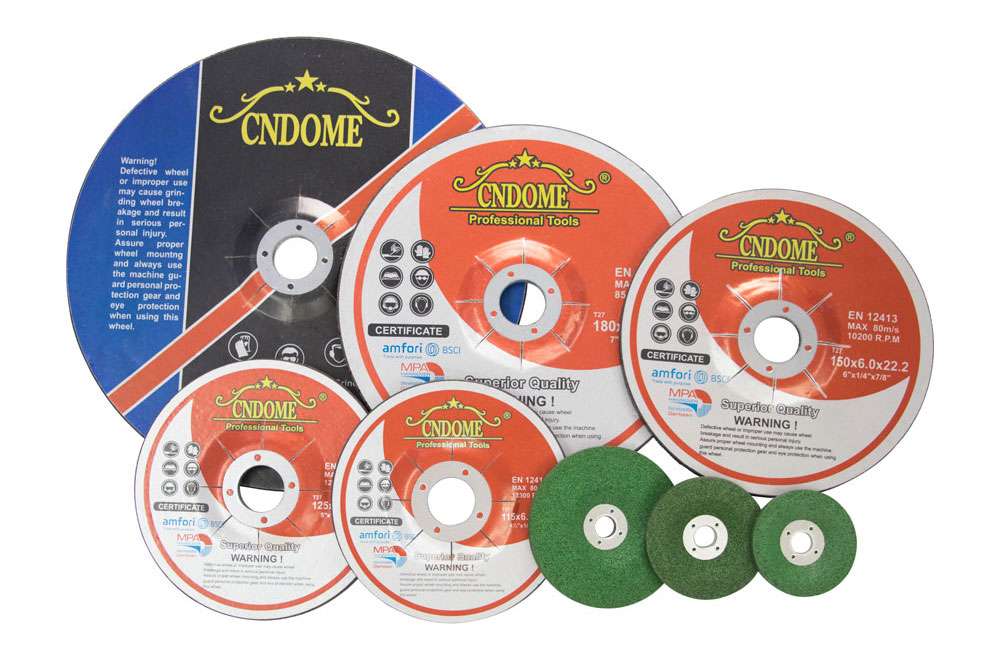Selecting the appropriate grinding wheels is crucial for achieving optimal performance in various grinding applications. Whether you’re working with metal, wood, or stone, using the right wheel can improve efficiency, reduce wear, and ensure safety. In this blog, we’ll break down the key factors to consider when choosing a grinding wheel.
1. Material Being Ground
The material you’re working with determines the abrasive type and bond used in the grinding wheel. Different abrasives work better for different materials:
- Aluminum Oxide (A): Ideal for grinding steel and other ferrous metals.
- Silicon Carbide (C): Best suited for non-ferrous metals like aluminum, brass, and softer materials like rubber or plastic.
- Ceramic (Z or SG): Works well for high-precision jobs, offering durability and cool cutting, especially for hardened materials.
- Diamond or CBN (Cubic Boron Nitride): Typically used for grinding extremely hard materials, such as carbide or hardened steel.
2. Wheel Grit Size
The grit size refers to the size of the abrasive grains embedded in the wheel. It affects the surface finish and removal rate:
- Coarse Grit (8 to 24): Removes material quickly but leaves a rougher finish. Suitable for rough grinding.
- Medium Grit (30 to 60): Balances material removal and finish. Common for general-purpose grinding.
- Fine Grit (70 to 180): Produces a smooth finish. Best for finishing applications.
- Very Fine Grit (200 and above): Ideal for precision work, such as sharpening or polishing.
3. Wheel Bond Type
The bond holds the abrasive grains in place and influences the wheel’s cutting action. Common bond types include:
- Vitrified Bond (V): Rigid and durable, suitable for precision grinding with minimal heat generation. Used in surface and cylindrical grinding.
- Resinoid Bond (B): Provides flexibility and can absorb vibration, ideal for cut-off wheels and rough grinding.
- Metal Bond (M): Primarily used with diamond and CBN wheels for grinding superhard materials.
4. Wheel Shape
The shape of the grinding wheel determines its versatility and application:
- Straight Wheel (Type 1): The most common shape, used for surface, cylindrical, and centerless grinding.
- Cup Wheel (Type 6 and 11): Used for surface grinding on flat surfaces or sharpening tools.
- Cylindrical or Wheel Ring (Type 2): For centerless grinding of cylindrical workpieces.
- Depressed Center Wheel (Type 27): Best for grinding welds, seams, and cutting applications.
5. Wheel Hardness Grade
The hardness of the grinding wheel impacts its ability to stay sharp or wear down quickly:
- Soft Wheels: Wear down more quickly, revealing new abrasive grains. Suitable for hard materials.
- Hard Wheels: Retain their shape longer and are used for grinding softer materials.
6. Operating Speed
Ensure that the grinding wheel is rated for the maximum speed of your machine. Using a wheel with a lower speed rating than your machine can result in dangerous situations, including wheel failure.
7. Coolant Use
Coolants reduce heat generation, prolong wheel life, and improve the quality of the finish. For dry grinding, you’ll need a different wheel than for wet grinding, as some bonds perform better in dry conditions.
8. Grinding Wheel Safety
Always follow safety guidelines when selecting and using a grinding wheel:
- Inspect wheels before use for any damage.
- Use the proper personal protective equipment (PPE) such as safety goggles, gloves, and face shields.
- Mount wheels properly, and use guards where necessary.
Conclusion
Selecting the correct grinding wheels involves evaluating the material, grit size, bond type, shape, and speed rating. Understanding these factors can optimize your grinding process and deliver better results. Whether you’re sharpening tools, grinding metal, or performing precision work, always ensure that the wheel matches the task at hand.
If you need further guidance on grinding wheel selection, feel free to reach out!



